COURSEBOOK Modern Europe, 1774-1924 for Cambridge International AS Level History
Graham Goodlad & Patrick Walsh-Atkins

Third edition with Digital access















Graham Goodlad & Patrick Walsh-Atkins

Third edition with Digital access














Chapter 1: France, 1774–1814
1.1 What were the causes and immediate consequences of the 1789
2.3 Why was Bismarck appointed as Minister-President and what were his aims in the period up to 1866?
This suite of resources supports learners and teachers following the Cambridge International AS Level History syllabuses (9489/9981/9982). The components in the series are designed to work together and help learners develop the necessary knowledge and skills for studying History.





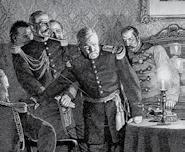
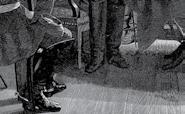




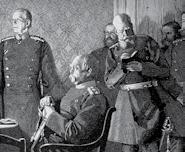


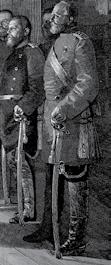



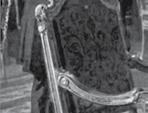





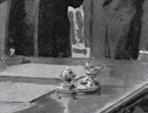





The Coursebooks are designed for learners to use in class with guidance from the teacher. One of the Coursebooks offers coverage of European Option: Modern Europe, 1774-1924 and the other offers coverage of International option: International history, 1870–1939 of the Cambridge International AS Level History syllabus. Each chapter contains in-depth explanations, definitions and a variety of activities and questions to engage learners and develop their historical skills.

The Teacher’s Resource is the foundation of this series. It offers inspiring ideas about how to teach this course including teaching notes, how to avoid common misconceptions, suggestions for differentiation, formative assessment and language support, answers and extra materials such as worksheets and historical sources.
This book contains a number of features to help you in your study.
Each chapter begins with Key questions that briefly set out the topics you should understand once you have completed the chapter.
The timeline at the start of each chapter provides a visual guide to the key events which happened during the years covered by the topic.
Getting started activities will help you think what you already know about the topic of the chapter.
Activities are a mixture of individual, pair and group tasks to help you develop your skills and practise applying your understanding of a topic. Some activities use sources to help you practise your skills in analysis.
Key terms are important terms in the topic you are learning. They are highlighted in bold where they first appear in the text, and definitions are given in the Key terms boxes. All of the key terms are included in the glossary at the end of the book.
Key concept boxes contain questions that help you develop a conceptual understanding of History, start to make judgements based on your knowledge and understanding, and think about how the different topics you study are connected.
Key figure boxes highlight important historical figures that you need to remember, and briefly explain what makes them a key figure.
Reflection boxes give you the opportunity to think about how you approach certain activities, and how you might improve this in the future.
These questions, written by the authors, help you prepare for assessment by writing longer answers.
These answers to some of the practice questions are accompanied by notes on what works well and how they could be improved. After reading the comments, you are challenged to write a better answer to the question.
The answers and the commentary are written by the authors.
Tips are included in the Preparing for assessment chapter. These give advice on important things to remember and what to avoid doing when revising.
Each chapter ends with a checklist of the main points covered in that topic, and gives you space to think about how confident you are with these points.
You should be able to:
Needs more workAlmost thereReady to move on

This chapter will help you to answer these questions:
• What were the causes of the revolutions of 1848?
• What happened during the 1848–1849 revolutions and what were their consequences?
• Why was Bismarck appointed as minister-president and what were his aims in the period up to 1866?
• How and why was German unification achieved before 1871?
Timeline
July 1806 Napoleon I establishes Confederation of the Rhine
We are working towards endorsement of this title for the Cambridge Pathway.
Jun 1815 End of Napoleonic Wars; German Confederation established
October 1813 Napoleon defeated at Battle of Leipzig
Jun 184 9 Collapse of Frankf urt Parl iament
Jun 184 0 Friedrich Wilhelm (Frederi ck William) IV becomes king of Prussia
Sep 1862 Bismarck becomes ministerpresident (prime minister) of Prussia
Nov 1850 Humiliation of Olmütz : Prussia abandons Erfurt Union plan
Jun 1867 Nort h German Confed eration set up under Prussian leadership
Jun 1866 Aust ro-Prussian War
Jan 1871 German Empire established
Mar 184 8 Revolution begins in Austri a and Germany
Jan 1834 Zollverein is founded
Jan 1861 Wilhelm (W illiam) I becomes king of Prussia Aug 1866 Treaty of Prague
Mar 1850 Erfurt Union of German st ates form ed
Jan 1864 Aust ro-P ru ss ian War against Denmark begins
Jul 1870 FrancoPrussian War begins
The map in Figure 2.1 shows central Europe in 1815, at the end of the Napoleonic Wars. Look at a map showing the boundaries of modern Germany. How do those of the German Confederation differ?
German Confederation
Figure 2.1: The German Confederation in 1815.
Until 1871 there was no such entity as a united German state. Instead, the area that we now know as Germany consisted of a number of separate states that varied considerably in size and importance. In the north-east, Prussia was emerging as the strongest economic and military force by the middle of the 19th century. It would become the leading power in the process of German unification. It was not inevitable, however, that this would occur. There were many obstacles to the creation of a united Germany.
At the end of the Napoleonic Wars in 1815, much of the area that would become Germany belonged to a loosely knit grouping known as the German Confederation. The dominant country was Austria, whose monarchy presided over a multi-ethnic central European empire. It had a strong interest in holding back the forces of national unity. This was supported by most of the princely rulers of the various German states.
Napoleonic Wars: The conflict between France, under Napoleon I (Bonaparte), and alliances of various European states that began in 1803 and ended with Napoleon’s defeat in 1815.
(See Chapter 1.)
Confederation: A loose association of states which retain some control over their own policies.
Multi-ethnic: Made up of people of different races.
You will have noted that Germany did not exist in 1815 as a single unified country. Instead, it consisted of a series of different states. Much of the territory lay within the boundaries of an organisation known as the German Confederation.This chapter explains how these states came to be united in the mid-19th century.
Before the Napoleonic Wars, most of the area that we know today as Germany had been part of the medieval Holy Roman Empire, a collection of semi-independent states under the Austrian emperor. This had collapsed in 1806, as a result of Napoleon’s invasion. He reorganised the west German states into a single organisation: the Confederation of the Rhine.
The French armies brought with them the ideas of the 18th-century Enlightenment, which stressed the power of reason and sought to sweep away outdated political and social structures. For example, they replaced the diverse laws and judicial processes of the various German states with their own legal system. In reaction, many German thinkers began to emphasise the distinctiveness of their own culture. Romantic writers stressed the importance of emotion and imagination, in response to the rational ideas of the French invaders, and they encouraged interest in the historical past of the German people. Particularly influential was the writer J. G. Herder, who popularised the concept of Volksgeist (‘spirit of the people’). This was the idea that each nation had its own individual identity, based around a shared heritage and language. These were the first stirrings of a sense of German nationhood.
In the next three decades, the main impulse for national unification came from educated, liberal-minded middleclass people. Their efforts to establish a parliament for the German people ended in failure in 1848, the ‘year of revolutions’ across Europe. Ultimately it was Prussia, guided by its leading minister from 1862, Otto von Bismarck, who brought about the creation of a united Germany. This happened not because Bismarck sympathised with the idea of nationality, but because he wanted to make Prussia the dominant power in the German lands. He achieved this through a series of wars, between 1864 and 1871, against Denmark, Austria and France. The Germany that emerged mirrored Prussia’s conservative, authoritarian, military nature.
German people began to understand the importance of uniting against the French occupation. After its defeat by Napoleon, Prussia, one of the most important states, reorganised its government and army. This enabled it to join with Austria and Russia to expel the French forces. The decisive Battle of Leipzig (1813), a major defeat for Napoleon, helped to develop a sense of national pride. It was later commemorated as a symbol of emerging
German identity, with a 91-metre-high monument constructed on the site to mark the centenary of the battle, even though German-speaking troops had fought on both sides (see Figure 2.2).

In September 1814, a congress of European nations met in Vienna to discuss the problems caused by the
wars, and to establish new boundaries on the continent (see Figure 2.3). The most important states represented at this series of meetings were Austria, Prussia, Britain and Russia. France, whose monarchy had been restored after the defeat of Napoleon (see Chapter 1), attended the congress, but had no decision-making powers. The decisions made at this meeting changed the face of Europe.
The European leaders faced a challenge from the related ideas of liberalism and nationalism, which were products of the French revolutionary era. The representatives of the countries who met in Vienna regarded these ideas with anxiety.
Congress: A large, formal meeting of delegates, in this case representatives of different countries.
Liberalism: A belief that government should be reformed to allow as much personal and economic freedom as possible. Nineteenthcentury liberals also favoured the concept of representative assemblies, although these would not necessarily be elected by all adults.
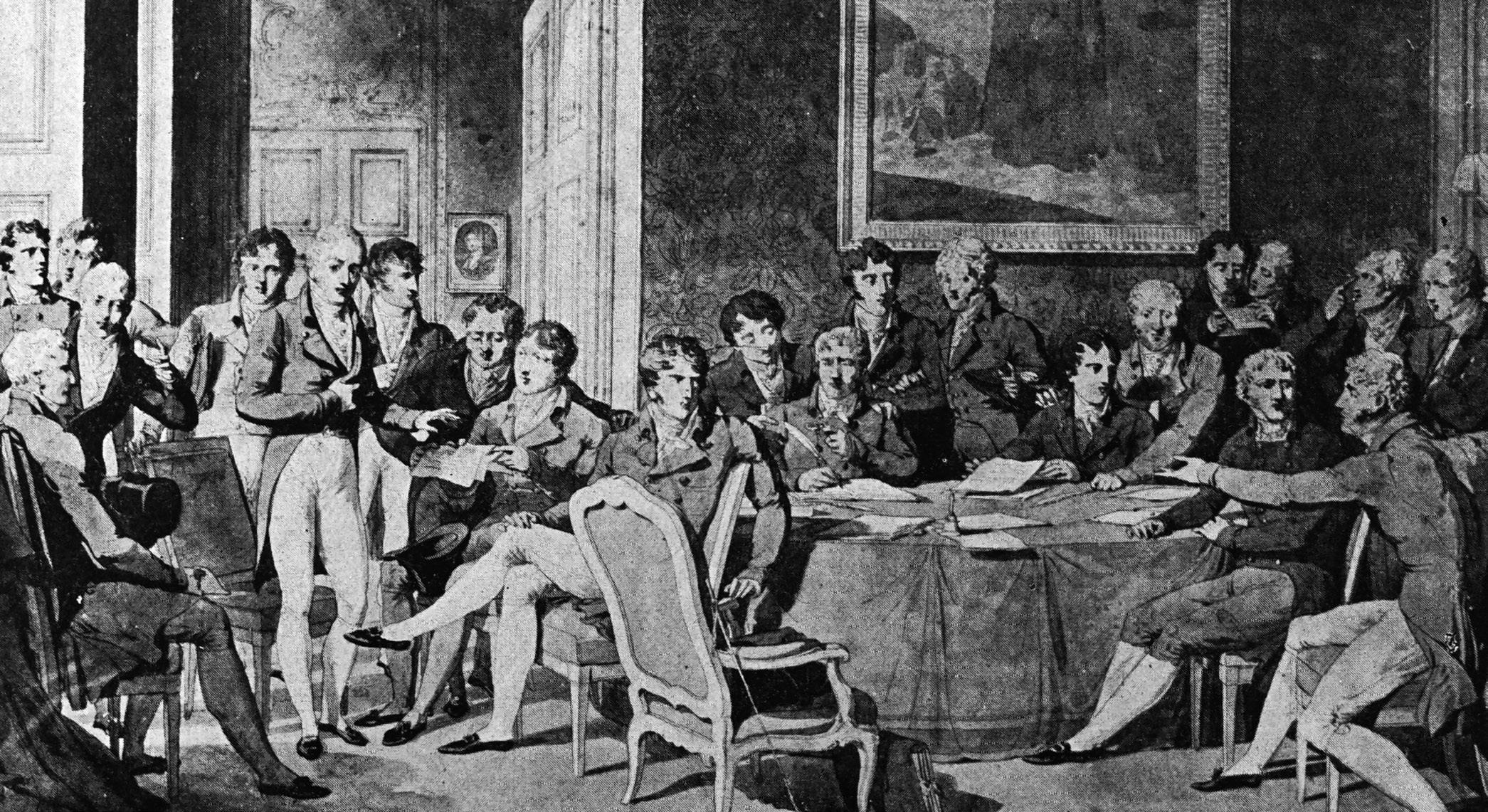
These leaders were political and social conservatives. They were determined to restore stability after the years of upheaval caused by the revolution in France and the movements of French armies across the continent. They wanted to recreate the rule of the old royal families who had lost power during the previous 20 years.
The most significant individual at the Congress was the Austrian foreign minister, Prince Klemens von Metternich. The Austrian Empire had a population of 25 million and extended over 647 000 square kilometres. It comprised present-day Austria and Hungary, together with a range of other territories in central and eastern Europe. In addition to Austrians (who spoke German), and Hungarians, among the many different ethnic groups under its rule were Czechs, Slovaks, Croats, Poles and even some northern Italians. The majority of the empire’s subjects were Roman Catholics, loyal to the Pope.
Prince Klemens von Metternich (1773–1859)
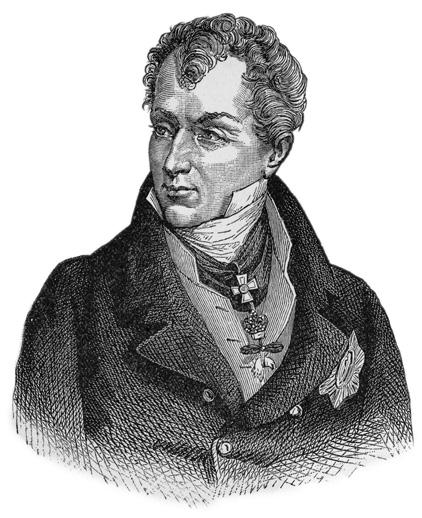
Metternich was Austria’s foreign minister from 1809 to 1848 and its chancellor (chief minister), as well, from 1821 to 1848. He played a key role in creating the alliance of Austria, Prussia and Russia which defeated Napoleonic France in 1813–1814. Metternich was a conservative whose main aim was to uphold international order to protect Austria’s interests. He was determined to suppress liberalism and nationalism. Metternich fell from power when the 1848 revolutions broke out and went into exile. He returned to Austria in 1851, after the power of the monarchy had been re-established, but he never again played an important role in politics. Always sure of his own abilities, Metternich famously said of himself that ‘error has never approached my spirit’.
systems in the other European states. Metternich was deeply suspicious of change, once describing the words ‘liberty’ and ‘equality’ as the source of evil because they were liable to mislead the masses of the people. He was aware that the empire was a fragile structure, and that nationalism threatened the rule of its royal family, the Habsburgs. He feared that if Germans, or members of other nationalities, were allowed their independence, the empire might collapse. He avoided stationing troops in the parts of the empire from which they came, as he believed this would reduce the chances of organised nationalist opposition developing. His policy was a negative one that relied on repressive methods such as press censorship. He created a network of secret agents who spied on political radicals and intercepted their correspondence. The Metternich System kept the peace in Europe, but at a cost of stoking up resentment from the peoples under its rule.
The ‘Metternich System’ was an alliance of conservative European states, who met in congresses after 1815 to uphold their common interests. The Metternich System aimed to maintain the rule of absolute monarchy in the Austrian Empire and the continuation of similar political
The largest German state was Prussia, a mainly agricultural country in the east of the North European Plain, with Berlin as its capital. It was ruled by an authoritarian monarch, King Friedrich Wilhelm III (1797–1840), who governed with the support of a conservative landowning class, the Junkers. The Junkers also provided the core of the Prussian army’s officer class. In the 1815 peace settlement, Prussia gained a great deal of territory, including the Rhineland in the west, an area separated from the main part of Prussia which had undergone industrialisation. This doubled the population of Prussia to more than 10 million. It was the only possible future rival to Austria for the domination of Germany, but at this stage it did not offer a challenge to its more assertive southern neighbour. With their conservative, monarchical forms of government, both Prussia and Austria had an interest in preventing political change in Germany.
Industrialisation: A process in which an economy that is mainly based on agriculture develops large-scale manufacturing industry.
Metternich’s s solution for Germany was to reorganise it into a confederation (Bund ) of 39 states under the control of Austria. These varied considerably in size, from kingdoms like Prussia, Bavaria and Saxony to
self-governing city states like Hamburg. It was not a united Germany and, in fact, the intention was to avoid such a development.
As shown in Figure 2.1, the Confederation was based on the boundaries of the old Holy Roman Empire. It contained some non-Germans, for example Czechs in Bohemia (a region in present-day Czech Republic) and French-speaking people in Luxembourg. At the same time, it excluded some areas with German-speaking populations, including parts of Prussia. Presiding over this structure was a conference of ambassadors from the member states, known as the Diet, which met in Frankfurt. The Diet controlled the foreign policies of the member states, but the individual rulers continued to manage their own internal affairs and the Confederation never developed a strong identity of its own. The rulers used the Diet as a forum–a meeting place in which to exchange ideas and defend their individual states’ interests. The Confederation did not have its own civil service and there was no attempt to develop it as an economic area. In 1818–1819, and again in 1831, Prussia led attempts to create a federal defence force. These initiatives ran into conflict over who should command such an organisation, and how it should be funded. Both Austria and the southern German states were wary of an arrangement that might give more power to Prussia. A federal army was created after 1840, but member states did not give full control of their forces to the Confederation.
Diet: An assembly which meets to debate and make decisions on political matters.
Civil service: Professional administrators who provide support to the government of a country.
Federal: A system of government in which power is shared between a central authority and various regional bodies.
The structure of the Confederation was designed to maintain Austria’s power over the German states. The Diet was always chaired by the Austrian representative. Austria also had a veto over any attempt to change the constitution, and it could usually count on the support of the main southern states–Bavaria, Württemberg, Baden and Hesse-Darmstadt–in a vote. These states were near each other and, with their predominantly Catholic populations, were culturally more sympathetic to Austria than to northern, Protestant Prussia. The rulers of these
southern states granted their subjects constitutions, with certain civil rights in law, but they retained the real power over the government. Most of the German princes followed Metternich’s lead in governing in an authoritarian fashion.
Strengths and weaknesses of the Confederation
The Confederation had some successes, but it also suffered from several major flaws.
The Confederation succeeded in its main aim, of holding back the growth of liberalism and nationalism, for over 30 years.
The Confederation lacked a strong central authority–no head of state, no effective federal armed force–or progress on economic cooperation. The Diet required unanimous agreement of all members, so few decisions were taken.
Austria’s dominance held the Confederation together and, with the support of the southern German states, was largely unchallenged until the 1860s.
The Confederation depended on agreement between its two largest members, Austria and Prussia, and so would survive just as long as the hiddenrivalry between the two remained suppressed.
Table 2.1: Strengths and weaknesses of the Confederation.
Metternich succeeded in maintaining a repressive and authoritarian regime in Germany in the decade and a half after the Congress of Vienna.
The Carlsbad Decrees
After Karl Sand, a member of a liberal student association, murdered a conservative writer and Russian spy, August von Kotzebue, Metternich secured the agreement of the main German states in August 1819 for the repressive Carlsbad Decrees. These had three key features:
• Universities: Each university would have an ‘extraordinary commissioner’ assigned to it,
to supervise the teaching programme. Liberal professors who undermined the established order would be removed from their posts. Unauthorised student organisations would be dissolved.
• The press: The member states of the Confederation and the Diet would censor the newspaper press (see Figure 2.4).
• A central investigating commission would be set up in Mainz to root out organisations promoting liberal and nationalist ideas.

Guilds: Associations of merchants or craftspeople, often dating back to medieval times, set up to protect the interests of their members. By the 19th century, they were widely seen as outdated and restricting free competition.
How does the cartoon indicate the viewpoint of the artist?
The influence of liberal ideas
Despite Metternich’s attempts to repress them, liberal and nationalist ideas spread after 1815, and from 1830 there was an upsurge of unrest.
The emergence of the middle class
Liberalism, which the Metternich System tried to suppress, was primarily an ideology of educated middle-class people. These consisted of two main groups: business people and professionals, such as lawyers, officials, doctors and university teachers. The growing business class was mainly concentrated in the cities of the Rhineland, and in ports such as Hamburg. Its members were not, in general, owners of large factories; most were merchants who controlled small workshops or employed large numbers of domestic workers who produced goods in their own homes. In Prussia, they had benefited from the removal of privileges that the traditional guilds had enjoyed up to the early 19th century. This allowed anyone to become an employer without first joining one of these guilds.
The most successful merchants often had a well-developed sense of civic responsibility that led them to become leaders in their communities. Many middle-class men acquired a university education, which was the gateway to the professions. Germany’s university population doubled between 1817 and 1831. The emergence of the middle class led the growth of a thriving newspaper press and the establishment of societies to promote cultural activities, as levels of literacy and awareness of public affairs increased.
The aims of the liberals
Liberals wished to gain greater freedom to improve their position in society, politics and the economy.
Increased career opportunities
Liberalism stressed the importance of opening careers to professional people based on their ability, rather than on inherited power and privilege. Middle-class liberals felt excluded from the upper levels of the social order that were still dominated by a privileged landowning aristocracy. In Prussia, for example, the aristocratic Junker class, which owned large agricultural estates in the eastern part of the country, controlled most of the higher positions in the army and civil service. Many members of the middle classes wanted to gain access to the opportunities offered by these public service careers and this made liberal ideas attractive to them.
A more representative government
Middle-class liberals wanted the people to have some say in government, but they did not want to see the establishment of fully democratic, republican systems of government. Liberals wanted countries to have representative assemblies or parliaments, elected by property-owning people like themselves, and constitutional monarchy was their preferred form of government. They also wanted certain guarantees of freedom, such as the rights to free speech and fair trials. This was a middle way between the authoritarian rule of an old-style monarchy, and democracy, which was seen as a dangerous system leading to mob rule and the seizure of power by masses of poor, uneducated people.
Memories were still fresh of the French Revolution, which had been marked by violence against people and property.
Many political liberals also believed in the idea of laissez-faire (meaning ‘leave it alone’) economics, in which trade and business functioned without government interference. They wanted to remove tariffs, which restricted trade between countries. Economic liberals wanted to promote competition between businesses because they argued it would reduce prices and improve the quality of goods for consumers.
The concept that linked all these ideas was an optimistic belief in humans’ capacity for self-improvement. Liberals believed that, if people were given freedom, they would work to improve their circumstances, and this would help society as a whole to make progress.
It is difficult to assess the influence of liberal ideas among the wider population of the German states. There was a great deal of intellectual excitement in the period 1815–1848, with the publication of books and pamphlets and the staging of public lectures. It seems likely, however, that this activity reached only a limited circle of like-minded, well-off, educated people. Some liberals took their ideas to working-class areas, for example in Hamburg. There were some workers that were interested in political ideas, however, they tended to be radicals who favoured the creation of a democratic republic. Many of them expected to achieve this through a popular uprising rather than rational debate.
Tariffs: Taxes or duties imposed by a government on goods imported into a country.
Pamphlet: A small booklet or leaflet.
The extent of support for liberalism in Prussia
Support for liberal reform within the Prussian elite was weak, especially after Friedrich Wilhelm III came under the influence of an ultra-conservative faction in the 1820s. Instead of a national representative body, in 1823 he created provincial diets–assemblies dominated by the nobility–that met infrequently and did not possess law-making powers. The diets did, however, over time bring about moderate change. The qualification for membership of the noble estate, or section, was property ownership rather than an inherited title. By the 1830s and 1840s, the diets were pushing for greater press freedom and receiving petitions calling for more representative institutions.
The main source of support for liberal ideas was the Rhineland, where a large urban middle class resisted the centralising efforts of the government in Berlin. The Rhineland retained its own legal system, derived from the period of Napoleonic rule. The Prussian education system was also remarkably progressive, encouraging children to think for themselves. School attendance and literacy rates were high for Europe in the first half of the 19th century.
Petition: A document, usually signed by many people, making a request to those in authority.
Progressive: Forward-looking, enlightened.
Despite its developing rivalry with Austria, Prussia had common ground with it in using state power to repress liberal movements. After the failed attempt to create a federal armed force in 1831–1832, for example, there was unrest in south-west Germany, and Austria and Prussia cooperated to suppress it. Prussia also had a close relationship with Russia, the most anti-liberal European power. This was cemented by the marriage of Friedrich Wilhelm III’s daughter Charlotte to Grand Duke Nicholas, the future tsar, in 1817 (Figure 2.5).

In the first half of the 19th century, liberalism was often associated with nationalism. Nationalists believed that people of the same race, language, culture or history should be united in an independent nation of their own. They should govern themselves without interference from any other country. Support for national unity in Germany at this time was limited mainly to small sections of society–literate, professional people and members of student associations known as the Burschenschaften. They were not typical of German society at the time. The majority of people were peasants who worked in agriculture. They faced a daily struggle for existence and most likely had little interest in abstract ideas of this kind.
Burschenschaften: Student organisations which developed after 1815 to promote ideas of German nationality, freedom and civil rights. (The singular is Burschenschaft.)
Most ordinary Germans felt greater loyalty to the region where they lived, rather than a strong sense of national identity. Communications were poor and people were usually born, then lived, married, worked and died in the same villages or neighbouring towns. Each region had its own traditions and customs. There was little desire to see the creation of a strong central government, which might impose additional taxes on the population, interfere with civil liberties and draft people into the armed forces.
In Germany, there was a common language and culture, but there was no religious unity. The southern states, such as Bavaria and Baden, were mainly Catholic. So, too, were Prussia’s western provinces, the Rhineland and Westphalia, and West Prussia and Posen in the east. By contrast, Prussia proper, like most of northern Germany, was largely Protestant. In addition, the industrialised Rhineland was economically very different from the agricultural regions to the south and east. Germans enjoyed relatively high levels of literacy, but most early-19th-century newspapers concerned themselves with local rather than all-German issues.
As we have seen, a sense of German cultural nationalism first emerged in the late 18th and early 19th centuries, in reaction to the invasions by France. Between 1815 and 1848, these ideas filtered through to the educated middle classes. In the cities, some workers were influenced by more radical democratic ideas, based on the sovereignty of the people, but they remained a minority of the population.
The impact of the 1830 revolutions on German states
Liberalism and nationalism took a stronger hold across Germany, especially in the south, after 1830. From 1830 there was an upsurge of unrest across the German states. This was partly in response to a series of European revolutions. In France, Charles X, last ruler of the old royal dynasty, was replaced in July 1830 by Louis Philippe, a representative of another branch of the French royal family. Charles had never accepted the ending of old-style absolute monarchy, and had tried to govern like his predecessors had before 1789.
Draw a table like the example below to show the differences in mid-19th-century Europe between the terms: liberalism, conservatism, radicalism and nationalism. What types of people in society were most likely to support each idea?
Definition of the term
Groups in society who were most likely to support the idea
By contrast, Louis Philippe established a parliamentary monarchy, based on the consent of the educated, property-owning middle class.
There were other liberal revolutions against conservative, monarchical regimes. Belgium declared its independence from the Netherlands and won recognition as a separate state in 1831. Greece won its independence from the Ottoman (Turkish) Empire in 1832. There was an unsuccessful revolt in Poland against the Russian Tsarist Empire. In Modena, Parma and the Papal states, there were uprisings in favour of a united Italy.
These movements encouraged liberals and democrats in Germany to agitate for change. In four small German states–Saxony, Hanover, Hesse-Cassel and Brunswick–rulers were obliged to grant constitutions. Increased press freedom allowed more criticism of governments. A group called ‘Young Germany’ was established, which called for a united Germany based on liberal principles. It consisted mainly of politically active writers and journalists who were opposed to the German princely regimes. Most of its members did not advocate violent revolution, but their radical ideas still drew the hostile attention of Metternich. In May 1832, democratic nationalists organised the Hambach Festival in the Rhineland-Palatinate region of west Germany. Some 30 000 people came together to demand national unity,
freedom of the press and other civil rights, which had been limited since the transfer of Hambach to Bavarian rule after the Napoleonic Wars. The black, red and gold flag that would become the symbol of German nationalism was prominently displayed at the gathering.
For the German, the seed of great events has not yet germinated. What he desires is a festival of hope; a festival not to celebrate what has been achieved, but what is still to be achieved, in constitutional freedom and German national dignity, not a glorious triumph, but a manful struggle to shake off oppression from within and without.
An extract from the invitation to the Hambach Festival, a political demonstration held in Germany, 27 May 1832.
In what ways does the language of this source extract illustrate the ideas of liberalism and nationalism? Note down the phrases which reflect these ideas.

Look at Figure 2.6. The artist took part in the Hambach Festival and depicted three of his friends in the foreground of the painting. He has shown the future national flag of Germany being carried upside down.
What do you think was the artist’s purpose in creating this image? Consider this information about the content of the painting. How useful is the painting as a historical source?
The Six Articles and Ten Articles, 1832
The Bavarian authorities reacted by tightening restrictions on political assemblies and speeches. Although the organisers of the Hambach Festival were acquitted of wrongdoing by an ordinary court, they were then tried and imprisoned by a special police court. As in 1819, Metternich persuaded the princes to accept a new round of repressive measures. The Six Articles of June 1832 limited the rights of elected assemblies in states which had constitutions, and also declared the supremacy of federal law over the laws of the individual states.
The Ten Articles, passed the following month, banned political meetings and festivals. Government permission was required for the publication of any newspaper with political content. Other measures included: police surveillance of anyone known to be critical of the authorities; tightening of passport rules; and deportation for anyone guilty of a political offence, who fled to another member state of the Confederation. It was even made illegal to wear the colours of the student associations in scarves and ties.
Support for nationalist ideas in the universities
In 1837 the new king of Hanover, Ernest Augustus, abolished the constitution that had been granted by his predecessor, and seven professors who objected lost their posts at the University of Göttingen. The ‘Göttingen Seven’ included Jacob and Wilhelm Grimm, two famous brothers whose collection of traditional folk tales helped to promote a sense of German culture (Figure 2.7). They were not alone in the German university system and after they were dismissed, institutions in Hamburg, Marburg, Weimar and elsewhere offered them posts.
Although the universities were the main source of demands for political change, they were powerless to achieve anything substantial. The princes ensured that they kept the levers of power in their hands when they granted constitutions. They retained the right to veto unwelcome proposals and could usually rely on the support of the upper houses of parliament, dominated by the aristocracy. The princes used a variety of means to limit the power of elected assemblies: restricting the vote to wealthy property owners, using indirect voting or having different classes vote in separate estates, with greater weighting attached to those in which the upper classes were represented. These devices had the effect of restricting the free expression of public opinion.
Indirect voting: A system in which voters choose delegates who then elect the representatives to sit in a central assembly or parliament.
Reactions to the growth of nationalist ideas
There was no real danger of revolution in Germany in this period. The liberals and nationalists were too few, and Austria could always count on its control of the Confederation and the support of Prussia in suppressing opposition. However, the authorities continued to fear the spread of these ideas.
Reasons for the growth of nationalism in the 1840s

High levels of literacy and the growth of a popular German press helped to spread nationalist ideas. Literature and music drew on traditional German culture. For example, in 1841 the lyrics of the song, Deutschland über alles (‘Germany above the others’), which would become the German national anthem, were written. Although the anthem later came to be associated with ideas of superiority over other nations, this was not its original purpose. It was an appeal to place the idea of a united Germany before provincial loyalties. The newspaper Die Deutsche Zeitung, launched in 1847, also reflected both nationalist and liberal sentiments.
External tensions with other countries encouraged nationalist feeling. In 1840 there was a border dispute with France over the River Rhine, which at one point seemed likely to result in a French invasion of German territory. Six years later there was a dispute with the
Danish king, who ruled the province of SchleswigHolstein. It lay on the Jutland peninsula, linking Prussia and Denmark, and contained a large German population.
Schleswig-Holstein: Two adjacent territories between the Baltic and North seas. Although not part of Denmark, they were under the personal authority of the Danish king as their duke. Holstein was German-speaking and was also part of the German Confederation. Schleswig had a mixed Danish- and German-speaking population. As a result, their status was disputed, and German nationalists claimed that they should be treated as one and be part of the Confederation.
Liberal and nationalist feeling in Prussia was briefly encouraged and then disappointed by the accession of a new king, Friedrich Wilhelm IV, in 1840. He was a complex and unstable character, who believed that God expected him to rule his subjects firmly but kindly. Friedrich Wilhelm spoke in a mystical way which was hard for his subjects to understand. He had some reforming instincts. For example, he relaxed censorship and gave greater powers to the provincial diets or assemblies. However, at heart the king had no real sympathy with liberal nationalism, and he rejected demands for a single parliament for all Prussian territories.
Friedrich Wilhelm IV (1795–1861)
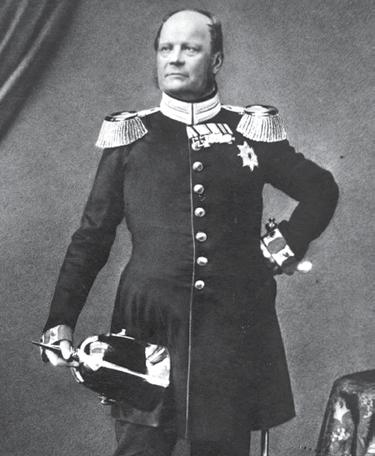
One of the most important factors in the long-term development of a united Germany was the economic progress made in the first half of the 19th century. Germany’s geographical situation at the heart of Europe was an advantage, because it meant Germany could trade easily with both east and west.
However, in the years after the end of the Napoleonic Wars, economic growth was held back by the existence of customs barriers between the members of the German Confederation. This slowed down trade across Germany because every time a product crossed a border it was likely to be taxed by the territory it was entering. On a long journey across Germany, this could happen numerous times. In addition, larger states such as Prussia often had their own internal boundaries, and imposed tolls (taxes) on goods as they moved within their own territory. All this entailed the time-consuming completion of paperwork at borders, increasing the costs of transport. At the same time, German industries had to contend with competition from foreign products, which did not face duties at the external borders of the Confederation. This meant that German firms within the Confederation had no competitive advantage over non-German ones outside.
Friedrich Wilhelm IV became king of Prussia in 1840. He was a romantic and often unpredictable figure, who unintentionally caused liberals to believe that he sympathised with their ideas. He was really a conservative, whose handling of the revolution of 1848–1849 left reformers disappointed. He was unable to rule for the last three years of his reign as a result of a stroke, and the country was governed by his younger brother, Wilhelm I, as regent.
Prussia led the way in removing obstacles to trade. In 1818, it established the Prussian Customs Union, abolishing the kingdom’s 67 internal customs barriers and encouraging other German states to do the same. It protected its own industries from foreign competition by charging a tariff on imports at its own frontier. This was initially set at a low level to discourage smuggling, and so that foreign countries were less likely to retaliate with high tariffs of their own. The Prussians worked to remove barriers to trade within the German Confederation, to create a larger market and reduce the price of goods. In 1828 Prussia and one of its larger neighbours, Hesse-Darmstadt, agreed a customs treaty.
Other states tried to set up their own rival customs unions, such as the Middle German Commercial Union, which comprised Hanover, Brunswick, Saxony and others. This attempt to challenge Prussia’s dominance of north–south trade collapsed after one of its members, Hesse-Cassel, abandoned the union in 1831. This enabled Prussia to expand its customs union, with Bavaria and Württemberg joining in 1834.
Prussia now formed the Zollverein, a customs union of 18 German states (Figure 2.8). This was the largest free-trade area in Europe, soon comprising 25 states, with a combined population of 26 million. Income from tariffs was divided between the member states in proportion to their population size. Soon they were linked by a rapidly growing rail network, centred on Berlin, and in time they adopted a common currency and system of weights and measures. The Zollverein promoted economic expansion for all its members. Prussia benefited in particular from the growth of trade and prosperity, and the Zollverein linked it with its Rhineland territory. It also provided a means of isolating Austria economically.
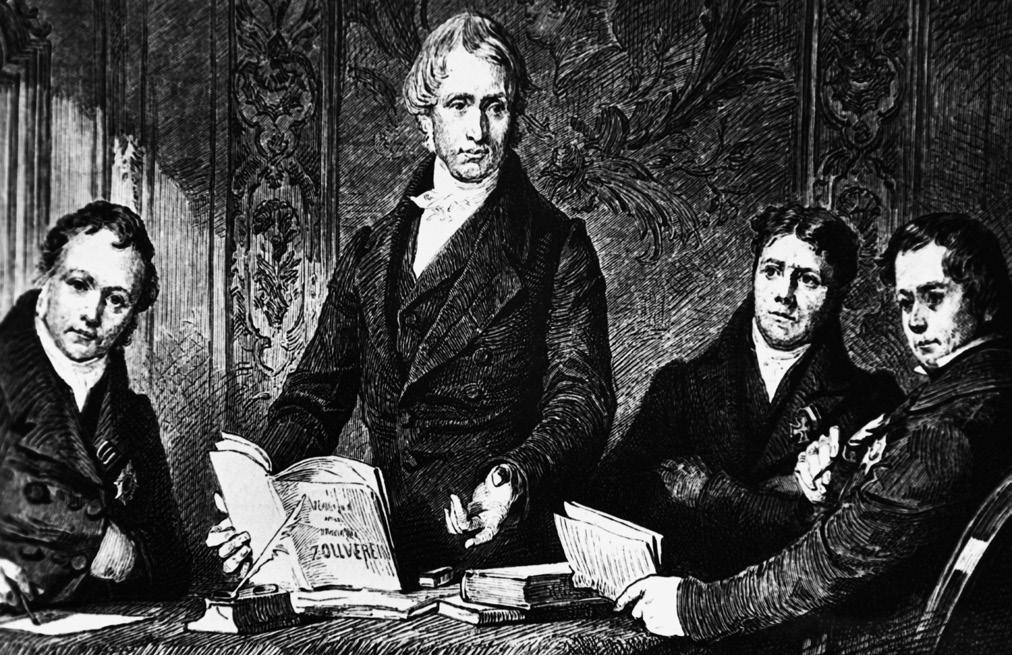
Customs union: An association of states who agree to abolish tariffs between themselves, and to operate a common set of tariffs on imports from other countries.
Austria did not join the Zollverein, because it did not see the importance of economic change and preferred to maintain high import duties to protect its domestic producers from the perceived threat of foreign competitors. Austria preferred to rely on trade within its
Look at Figure 2.9. How does the map help to explain the growing importance of Prussia in the development of a more unified German economic system?
Prussian tariff system, 1818
Zollverein by 1834
Zollverein by 1854
Joined Zollverein, 1867–88
empire and did not want to lower its tariffs to the level of those within the Zollverein. In the long run, this would be an important reason why Austria lost control of Germany to Prussia. In turn, Prussia became determined not to allow Austria to join the Zollverein later, to maintain its own advantageous position. It also meant that German economic growth was centred on the ports of the North Sea rather than directed southwards to the valley of the River Danube.
The Zollverein helped Prussia assume a leading economic position within Germany, but this did not mean that it would also take on its political leadership. The states that joined the customs union insisted that decisions in its governing body, the Zollverein Congress, had to be unanimous, and the states were determined to retain their independence. Nationalists who hoped that the Zollverein might provide a basis for a political union were disappointed.
One of the nationalists’ key weaknesses was that they could not agree on where the frontiers of a German state should be. Some favoured a ‘large Germany’ (Grossdeutschland) which would include Germanspeaking regions of Austria, and which would be dominated by Austria. Others preferred a small Germany (Kleindeutschland) without those regions, which would, therefore, be dominated by Prussia. These preferences to some extent reflected the continuing cultural differences between Protestant northern Germany and the Catholic southern states. The industrialised Rhineland remained more economically developed than the still largely agricultural east.
The following factors were all obstacles to German unification. From what you have learned so far, which do you think was the most important? Hold a class debate in which you argue the case for the following factors. Remember that you must give reasons why you have chosen each factor.
• Austria’s opposition to Ger man nationalism
• The hostility of the smaller German states to the growth of Prussian power
How did you decide which factor was the most important? Explain your thinking to another student. How would you defend your choice? Have you changed your mind after listening to your partner’s choice?
• Divisions within the nationalist movement
• Lack of support for nationalism among the poorer classes.
Transport was critical to Prussian and wider German economic development. Improved roads and steamboat services on the Rhine and Elbe rivers played an important part. But the real stimulus to heavy manufacturing from the 1840s was the rapid development of railways. At the start of the decade, the Zollverein had less than 600 km of rail line; by 1850 it had 5800 km. Railway building attracted capital investment and stimulated the coal and iron industries, the two most important raw materials that it used. This tended to encourage the emergence of larger industrial firms and the rise of new urban centres.
The first railway line in Prussia was a privately built one, linking Berlin to the suburb of Potsdam. Constructed in 1838, this was known as the Stammbahn or ‘original line’. Prussia was in the forefront of railway building, expanding its network from 185 km in 1840 to 1106 km five years later. By the late 1840s, alarmed by news of a French construction programme on the borders of the Confederation, and finding that the member states were too slow to respond, the Prussian state was pushing ahead with rail-building (Figure 2.10).
Prussia benefited economically from the ability to move goods more quickly and cheaply over longer distances. Railways also contributed indirectly to its later role as the driving force behind German nation-building, as Berlin became the most important hub of the network. In the long run, they would facilitate the movement of troops and military supplies–a key asset in the later wars of unification.

2.10: A painting of the Berlin-Potsdam railway in 1847
1840s
During the 1840s the German states faced a number of problems.
Economic and social problems in the 1840s
The year 1848 is known as the ‘year of revolutions’, when a number of European countries were affected by popular uprisings.
The revolutions were not just caused by liberalism and nationalism. The events of 1848–1849 had a variety of causes–economic, social and political.
Deteriorating economic conditions had the potential to create a revolutionary situation in the German states. Poor living standards for the peasants in the countryside were made worse by high rents and two years of bad corn harvests in 1846 and 1847. This had the effect of depressing living standards, with cereal prices increasing by almost 50% in 1847. Potato blight, a disease that ruined the crop, added to the misery as this was the staple diet for most German peasants.
What does Table 2.1 suggest about the growth of Prussia in comparison with the rest of Germany? What other types of data would help you to assess how important Prussia was becoming in this period?
Rural workers moved to the cities in response to the hardship they faced in the countryside, increasing pressure on the availability of jobs. Urban overcrowding, poor sanitation, disease and unemployment were a dangerous combination. Rising food prices and low wages caused disturbances in cities even before the 1848 revolutions. The crowds blamed merchants and customs officials for shortages, and they became the main targets of the food riots. One of the most notable cases of looting, which occurred in Berlin in April 1847, was known as the ‘potato revolution’. The riots were an attempt to control the food supply rather than to achieve political goals. However, they helped to politicise those who took part, and caused an intense debate between radicals and conservatives about the response of government to social distress.
Agriculture was still more important than industry prior to the 1848 revolutions. Around 70% of the population still made their living from agriculture. Manufacturing was the main economic activity only in certain areas, notably the Rhineland and Saxony. The main growth areas were in the production of consumer goods such as textiles.
Increasing population size, due mainly to a declining death rate, exacerbated the situation. Table 2.1 gives some indication of the rate of growth across the period, with figures for the German states as a whole shown alongside those for Prussia.
In 1847 there was a recession in the textile industry that seriously affected the welfare of urban workers. The economic downturn led employers to cut wages. This occurred against a background of poor working conditions in factories, typified by long hours in an unhealthy environment. The poorest workers’ protests in early 1848 were mainly about their daily lives and were not explicitly political in character.
Skilled workers, however, went beyond these basic demands. They were more articulate than the unskilled workers, and in cities, such as Cologne, they had their own organisations to represent their interests. In spring 1848 they formed workers’ committees in Berlin that called for trade union rights, a minimum wage and free education. Others drew up an industrial code, setting out rates of pay and working hours, though this was later turned down when presented to the Frankfurt Parliament, which met in 1848–1849 (see Section 2.2).
Trade union: An organisation which negotiates with employers on behalf of workers, to improve their pay and conditions of work.
Karl Marx and Friedrich Engels, authors of the revolutionary Communist Manifesto (1848), argued that these developments indicated the growth of a ‘working class consciousness’, as industrial workers were driven to revolt by their experience of exploitation under the capitalist system. But the revolutions of 1848 were not primarily about the working classes rising to seize control of the means of production. The disturbances that erupted across Germany in that year would not have occurred without the emergence of a discontented middle class who demanded political and constitutional change.
KEY TERM
Capitalist: A person who owns wealth that is invested in a business enterprise.
Similarity and difference
Historians are interested in the ways in which people in the past reacted either in similar or different ways to events.
Austria and Prussia were both opposed to liberal and nationalist movements in Germany between 1815 and 1848. But they had very different approaches to the economic development of the German states, especially after the formation of the Zollverein.
In small groups, discuss why the two states acted as they did in this period.
This chapter has been cut part way through for sampling purposes
Read the four sources and then answer both parts of question 1.
It remains to be remarked that the feeling of uneasiness in Germany is augmented [increased] by the impression that … when France shall have completed Her military preparations, She will seek a war with Germany so as to obtain those compensations for the aggrandisement [increased power] of Prussia, which She has sketched out, but which She has already learnt will only be yielded to superior force. Whether the fears thus entertained in regard to the eventual course of France and to the alliances to which it may give rise will be realized or not, some seventeen or eighteen months hence, their existence produces a feeling of uncertainty as to the future and furnishes a motive for military preparation on the part of Germany.
From a report by the British envoy to Bavaria, Sir Henry F. Howard, to the British foreign secretary, Lord Stanley, 3 December 1866
In regard to the South German situation I think the line for Prussian policy is set by two diverse aims … the one distant, the other immediate … The distant and by far the greater aim is the national unification of Germany. We can wait for this in security because the lapse of time and the natural development of the nation which makes further progress every year will have their effect. We cannot accelerate it unless out of the way [unexpected] events in Europe, such as some upheaval in France or a war of other great powers among themselves offer us an unsought opportunity to do so … Every recognisable effort of Prussia to determine the decision of the South
German Princes will endanger our immediate aim. I consider this to be … to keep Bavaria and Württemberg in such political direction that neither will cooperate with Paris or Vienna … nor find a pretext to break alliances which we have concluded [with them].
From a letter from Bismarck to Wilhelm I, 20 November 1869
The [governments of the North German Confederation] have felt that they have done all which honour and dignity permit to maintain for Europe the blessings of peace; and the clearer it appears to all eyes that the sword has been forced into our hand, with greater confidence we turn, supported by the unanimous will of the German governments of the South, as well as of the North, to the love of the Fatherland and willingness for sacrifice of the German people to the summons to protect her honour and independence.
From the speech of the king of Prussia at the opening of the North German Reichstag, 19 July 1870
After I had read out the concentrated edition to my two guests, Moltke remarked: ‘Now it has a different ring; it sounded before like a parley [a negotiation]; now it is like a flourish in answer to a challenge.’ I went on to explain: ‘If in execution of his Majesty’s order I at once communicate this text, which contains no alteration in or addition to the telegram, not only to the newspapers, but also by telegraph to all our embassies, it will be known in Paris before midnight, and … will have the effect of
a red rag upon the Gallic [French] bull. Fight we must if we do not want to act the part of the vanquished without a battle. Success, however, essentially depends upon the impression which the origination of the war makes upon us and others; it is important that we should be the party attacked …’
From Bismarck’s memoirs, published in 1898, recalling the evening when he edited the Ems Telegram, 13 July 1870
1 a Read Sources C and D. Compare Sources C and D as evidence of Prussia’s responsibility for the outbreak of war with France in 1870. [15 marks]
b Read all of the sources. ‘Bismarck planned in advance to complete the process of German unification by means of a war with France.’ How far do the sources support this view? [25 marks]
Answer both parts of the question.
2 a Explain why the rulers of the German states survived the revolutions of 1848–1849. [10 marks]
b To what extent was Prussia’s military strength the most important reason for the unification of Germany? [20 marks]
2 a Explain why the rulers of the German states survived the revolutions of 1848–1849. [10 marks]
This introduces the key aspects of the explanation quite concisely, so that the reader knows what to expect in the main body of the answer. It also shows awareness of the need to assess the relative importance of different factors. But does the final sentence really add anything? Remember that time is limited. It would have been better to add a sentence to explain what is meant by an ‘instinct for survival’.
The German princes were taken by surprise by the revolutions which swept across their territories in 1848–1849, but within a year they had recovered their power. This was partly because of their own instinct for survival and the support they received from the two most powerful states, Austria and Prussia. However, it was mainly because of the internal weaknesses and divisions of the revolutionaries. In this essay I will explore these different factors, in order to explain why the princes survived the revolutionary upheavals of this period.
The princes initially granted the revolutionaries some of their demands, setting up constitutions which limited their own power. This showed their ability to react to circumstances; they knew that they could be swept from power if they tried to use military force at a time when support for the revolutions was strong, in the spring of 1848. But they were waiting for the right time, when the revolutions started to run out of steam, to fight back. Most of the princes had made sure that they kept their armed forces under their control. This meant that when the revolutionaries started to fall victim to internal divisions, the princes were able to step in and recover control.
This is a valid explanation, and the last sentence links neatly to the next paragraph, which deals with the weaknesses of the revolutionary movement. But it lacks examples to support the points it makes. It could include, for example, the support provided by Prussia to the rulers of Baden, Württemberg and elsewhere in suppressing the uprisings in 1849. On a point of style, the phrase, ‘started to run out of steam’ is not wrong, but a more formal expression, such as ‘began to lose momentum’, might create a more ‘professional’ impression.
It is doubtful that the princes would have recovered their power so easily, if they had been confronted by more united and better organised revolutionary forces. The revolutions of 1848–1849 in the German states were
undermined by divisions between liberal, middle-class groups and more radical, working-class elements. They were struggling for different objectives and did not see eye-to-eye with each other. For example, in the Rhineland, better-off middle-class revolutionaries abandoned the revolution because they feared that armed working-class crowds were presenting a threat to their property. This weakened the movement and helped the princes to regain control.
This is a stronger paragraph because it uses a specific example, events in the Rhineland, to illustrate the point it is making. But a sentence or two to explain the different aims of the two types of revolutionaries would have helped to develop the argument. What were the liberals and radicals seeking?
The weakness of the revolutionary movement was illustrated by the failure of the Frankfurt Parliament, which the liberal nationalists hoped would create a new constitution for Germany as a whole. It was too slow to agree on a form of government and was also divided between those who wanted a smaller Germany, led by Prussia (Kleindeutschland) and those who wanted a larger Grossdeutschland which would include Austria. The Parliament did not have armed forces of its own and when a crisis occurred in Schleswig-Holstein, which German nationalists wanted to see join the other German-speaking provinces, they had to rely on Prussia for help. In August 1848 the Prussians made their own peace with Denmark, whose king was the ruler of Schleswig-Holstein, when it suited their interests.
with a concluding sentence linking to the theme of the essay–the power of the princes. It could have ended, for example: ‘This showed that the goals of liberal nationalism could not be realised without the cooperation of the princes, who had shown that they still possessed the vital resource of armed strength, which they would use to serve their own interests.’
This paragraph concisely highlights the key weaknesses of the Frankfurt Parliament, whose failure was a key reason why the liberal revolutions of 1848 ended in disappointment. It uses appropriate terminology (Kleindeutschland/ Grossdeutschland). It would have been better
Finally, the recovery of the two largest states, Austria and Prussia, from the shocks of March 1848 helped the princes to recover. Austria was soon in a position to use its leadership of the German Confederation to its advantage, under a new prime minister, Prince Schwarzenberg. In Prussia the key role was played by King Friedrich Wilhelm IV, who had first seemed to show sympathy for the revolution but, when he felt strong enough, crushed its hopes. This occurred when he turned down the offer of the German imperial crown in April 1849. This showed that he refused to accept the authority of the parliament and he would only receive such a crown if it was offered by his own peer group, the German princes. The fact that the revolutionaries had such high hopes of the king, rather than pushing for the more radical solution of a German republic, shows how unlikely they were to succeed.
This is another strong paragraph. It would have benefited from more material on the recovery of Austria, but the analysis of Friedrich Wilhelm IV’s role is particularly good. The final sentence nicely links the part played by the king with the weaknesses of the revolutionaries.
The princes recovered so rapidly from the upheavals of 1848–1849, partly because they were resourceful, and they knew when to retaliate. They had never given up their most important powers, even when they had been forced to grant their subjects more freedoms and had introduced constitutions. But the
main reason for their survival was the weakness of liberal nationalism, which from the start was not well enough organised or united to succeed.
This conclusion highlights the most important points of the argument, which have been developed in the main body of the essay. But it does not fully show the connections between the different causes. The essay demonstrates good knowledge of the topic, although, as noted, more
After studying this chapter, complete this table:
You should know about:
examples would have helped–few princes and their states are actually mentioned and, perhaps understandably, the focus is mainly on Prussia. It explains the main factors with relevant supporting information, and there are no factual inaccuracies. It would benefit from a little more detail and a more fully supported conclusion.
Consider the tips above. Now write your own answer to this question.
how the forces of conservatism held back the process of German unification between 1815 and the 1860s
the roles that liberalism and nationalism played in the unification of Germany
why the revolutions of 1848–1849 failed to produce a united Germany
the importance of Prussia’s growing economic and military strength in the process of unification
the part played by Otto von Bismarck in making Prussia the dominant power in a united Germany
the importance of a succession of wars fought by Prussia, against Denmark, Austria and France, in bringing about German unification.